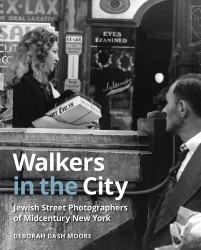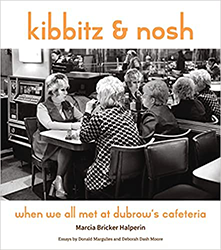Alana Newhouse’s beautiful collection of archival photographs from the Jewish Daily Forward, compiled with the aid of Chana Pollack, selectively reveals over a century of Jewish life in America. Much as the Forverts, as it was known to its Yiddish speaking readers, illustrated both the America of the neighborhood, as well as the one that lay beyond one’s imagination, these photographs juxtapose the holy and the profane, the tragic and the celebratory, the profound and the mundane, in the lives of ordinary Jews. The sheer sweep of its subjects tells much about how Jews immersed themselves in America, both as a distinct minority and as an assimilated group who influenced America as much as they were influenced by American culture.
The thoughtful essays which accompany these photos appear in chronological groupings. Their subjects reflect key aspects of the 20th century Jewish diaspora: the Lower East Side; the Labor movement; the entertainment industry, including Yiddish Theatre; the Holocaust; Israel; and a changing Jewish identity. These are among the great signposts for the American Jewish community, or at least that portion which, newly urbanized, settled on the East and West coasts, but the range of subjects is what makes these essays so thoughtprovoking. They are original, their insights are based on personal experience, and they care deeply for the people about whom they are writing. The photographs often cast light on the essays rather than having the essays explain these largely personal, candid snapshots. Newhouse invites the viewer to peer inside a diverse community, which such essayists as Nathan Glazer, Alan Dershowitz, Roger Kahn, and Deborah E. Lipstadt lovingly analyze.
“Holy Hollywood” that it was immigrant Jews who created the movie industry. They came to America and displayed their “talent for cultural intuition” by explaining America to Americans. What chutzpah! What genius! Wieseltier discusses the uninviting quality of “neediness” in many American Jewish men which movies reveal. Photos of Woody Allen, and Arthur Miller with Marilyn Monroe, accompany his words, as if to say, “We need not apologize for this revelation because after all, we’re the ones who dish out the ridicule to ourselves and that’s okay.” And as Jews, history’s exiles, have adopted the characteristics of whatever host culture in which we find ourselves, it is natural for American Jews to adapt by becoming just like the majority, however uncommitted to serious study and religious tradition this means we will be. Wieseltier’s essay both chastens and commends us for doing what we could not avoid if we were to become fully accepted as Americans.
The Forverts mirrored the past and sought to unify Jewish life in the present. In its second century, with a complex future ahead, the Forverts is optimistic, embracing new religious directions emerging in the Jewish community. Heeding Santayana’s warning about learning from history, one must revisit a past which these photographs and essays illuminate. A Living Lens serves to prepare us to face an uncertain future, bravely.

Visual Arts
A Living Lens: Photographs of Jewish Life from the Pages of The Forward
- Review
By
– November 14, 2011
Noel Kriftcher was a professor and administrator at Polytechnic University, having previously served as Superintendent of New York City’s Brooklyn & Staten Island High Schools district.
Discussion Questions

Jewish literature inspires, enriches, and educates the community.
Help support the Jewish Book Council.


